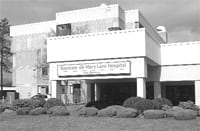Physician Practices Should Establish Effective Scheduling Protocols
Establishing effective scheduling protocols to efficiently manage patient panels is a difficult task for physician practices because it requires balancing clinical obligations, patient needs, and practice resources. However, implementing strategic scheduling practices, such as same-day appointments, in provider schedules can enhance the patient experience by improving access to timely care.
Physician practices should consider piloting various scheduling models to optimize access and implement policies that demonstrate the following sentiments:
• To retain established patients and obtain new patients. The longer patients wait to see a physician, the more likely they are to cancel or seek care elsewhere.
• To demonstrate practice values. Implementing strategies to manage patients based on level of urgency exhibits that a practice values safety, timeliness, and patient-centeredness.
• To avoid revenue loss. Providers miss opportunities to engage with patients when appointments are missed.
Practices should discuss with their practice-management software vendor whether the following are functions available within the scheduling system. If so, adopting the following scheduling tools and approaches can enhance patient access and the patient experience:
• Flagging high-risk no-shows. New data-analysis tools examine patients’ attendance history to label patients as high-risk for cancellations or no-shows. Practices can make additional efforts to reach out and remind these high-risk patients of their appointments, decreasing the likelihood of a no-show.
• Auto-rescheduling. Auto-scheduling allows practices to attempt to fill appointments that are cancelled within 48 hours by sending automated text messages or e-mails to patients who have previously failed to show and do not have a future appointment scheduled or are on the waiting list.
• Open-access scheduling. This method allows patients to schedule appointments online by viewing a calendar of available times. Some tools offer appointment windows based on appointment classification (annual checkups versus surgeries) or patient classification (new patients versus established ones).
• Online patient portals. Portals allow patients to be more involved in their healthcare, which may encourage preventive actions that potentially reduce unnecessary visits.
• Patient contact centers. Establishing a centralized patient contact center allows practices to discuss scheduling, pre-registration, insurance verification, and out-of-pocket costs with patients before appointments, reducing confusion for both patients and practice staff.
• Confronting access issues. Practices should be able to appropriately address access to care. Potential access barriers may include a shortage of rooms, physicians, medical assistants, or other administrative resources. Ways of improving availability may include offering alternatives to communicate with providers, such as e-mail, patient-portal access, or telemedicine services.


Comments are closed.